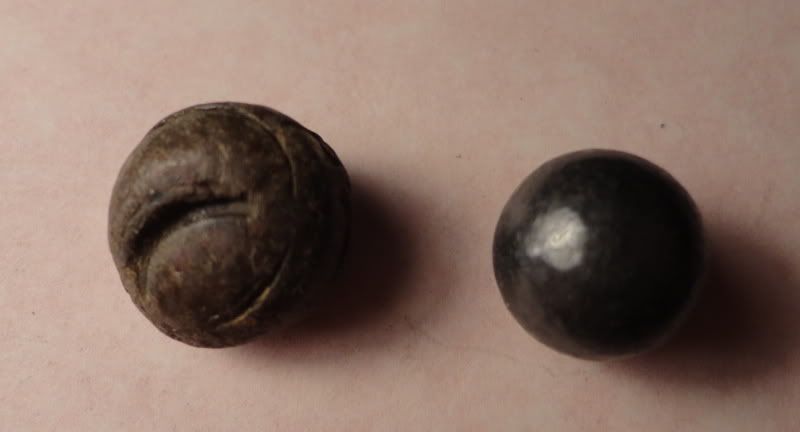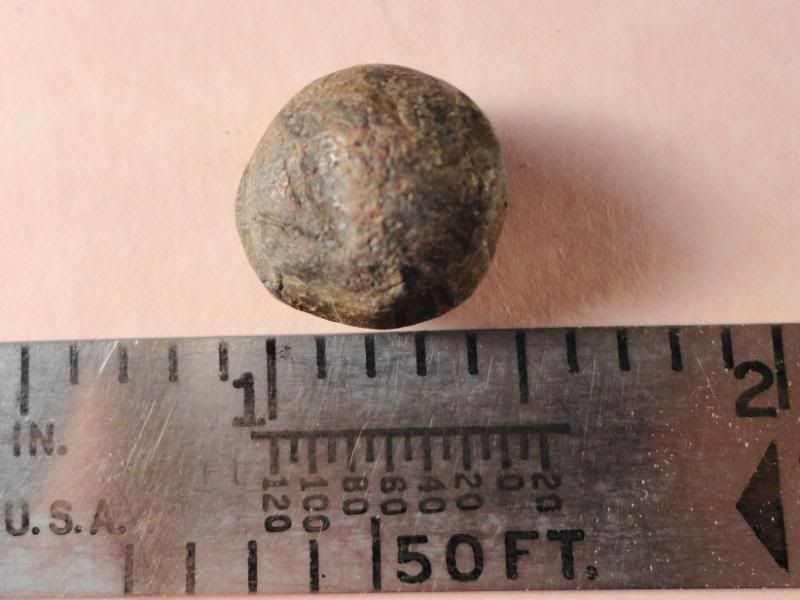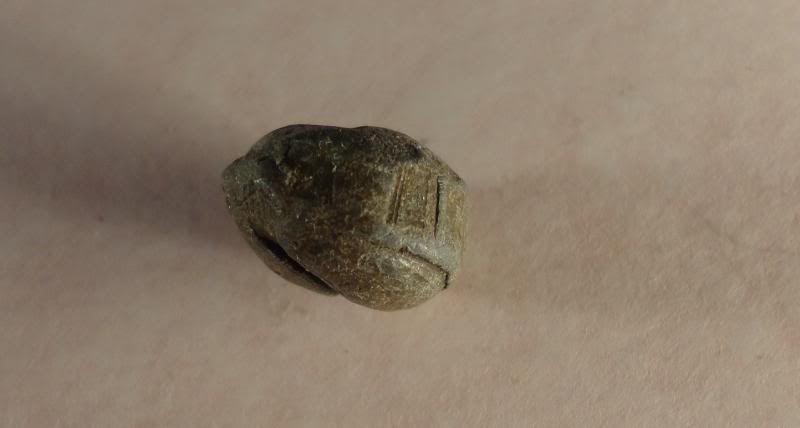Herb
54 Cal.
- Joined
- Mar 19, 2004
- Messages
- 1,955
- Reaction score
- 457
I was stationed at the Mark Twain National Wildlife Refuge at Quincy, Illinois in 1959 and in October, I went down to Grafton, Illinois to work on the Batchtown and Calhoun NWRs. This is above Alton, where Lewis and Clark spent the winter of 1803-4 at Wood River before starting up the Missouri River. On the Batchtown Refuge, I found along the bank of the Mississippi River a lead roundball. I thought, "Lewis or Clark could have fired this ball!" It weighs 137.5 grains, compared to the 128 grain .440 ball shown below, so by comparison it could be a .47 caliber ball. Notice the sharp, circular imprint, .410 in diameter, and the deep crescent cut. This is the back side of the ball.

This is the front side that struck something.

There are seven lands and seven grooves, and they measure .100 each. So 14 times .100 gives us 1.4" circumference for the bore. Circumference equals pi times diameter. So 1.4 = 3.14 x D. Divide both sides by 3.14 and we get a diameter of .4458. But is the circumference for the land diameter or the groove diameter? What caliber is this?

Lewis and Clark had .54 caliber military rifles, but I think I read that Lewis had a "small rifle". Does anyone know if this is true and was it about a .45 caliber? How to explain those sharp imprints on the backside of the ball? A .445 ball weighs 133 grains.

This is the front side that struck something.

There are seven lands and seven grooves, and they measure .100 each. So 14 times .100 gives us 1.4" circumference for the bore. Circumference equals pi times diameter. So 1.4 = 3.14 x D. Divide both sides by 3.14 and we get a diameter of .4458. But is the circumference for the land diameter or the groove diameter? What caliber is this?

Lewis and Clark had .54 caliber military rifles, but I think I read that Lewis had a "small rifle". Does anyone know if this is true and was it about a .45 caliber? How to explain those sharp imprints on the backside of the ball? A .445 ball weighs 133 grains.




